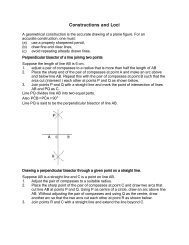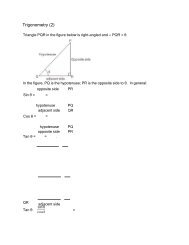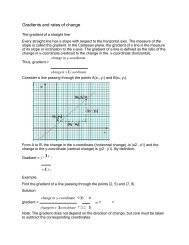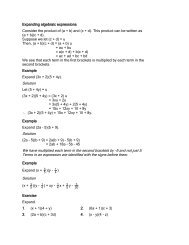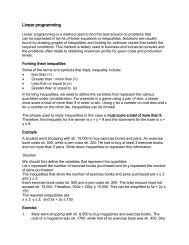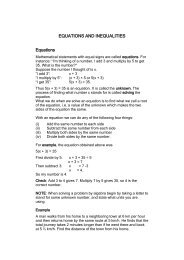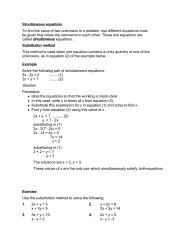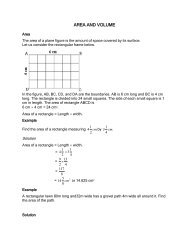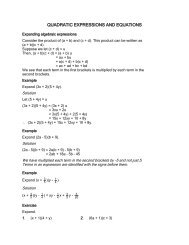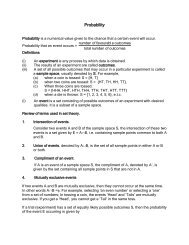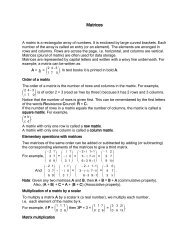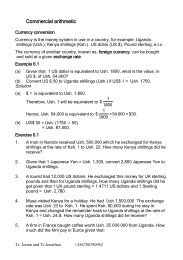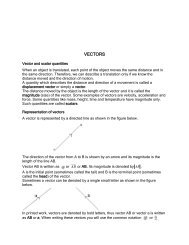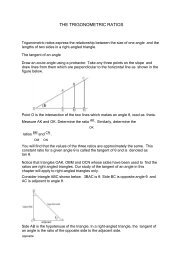J20
Create successful ePaper yourself
Turn your PDF publications into a flip-book with our unique Google optimized e-Paper software.
An object can undergo several transformations, one after the other. This is<br />
done such that the image of the preceding transformation becomes the object<br />
of the next transformation.<br />
When a object, A, undergoes a transformation R followed by another<br />
transformation N, this is shown as N[R(A)] or NR(A).<br />
The first transformation is always indicated to the right of the second<br />
transformation.<br />
RR(A) means ‘perform transformation R on A and then perform R on the<br />
image’. It may be written R 2 (A).<br />
Example<br />
A is a triangle with vertices (2, 1), (2, 4) and (4, 1). R is a rotation of 90 0<br />
clockwise about the origin and N is a reflection in the y-axis. Find the vertices of<br />
the image of A if it undergoes the following transformations:<br />
(a) NR(A) (b) RN(A)<br />
Solution<br />
(a) The figure below shows triangle A under these transformations and its<br />
image R(A) and NR(A).<br />
The final image of A has vertices (-1, -2), (-1, -4) and (-4, -2).<br />
(b) The figure below shows triangle A and its images N(A) and RN(A).<br />
The final image of triangle A under these transformations has vertices<br />
(1, 2), (1, 4) and (4, 2).<br />
The order of transformation is very important.<br />
NR(A) ≠ RN(A).



